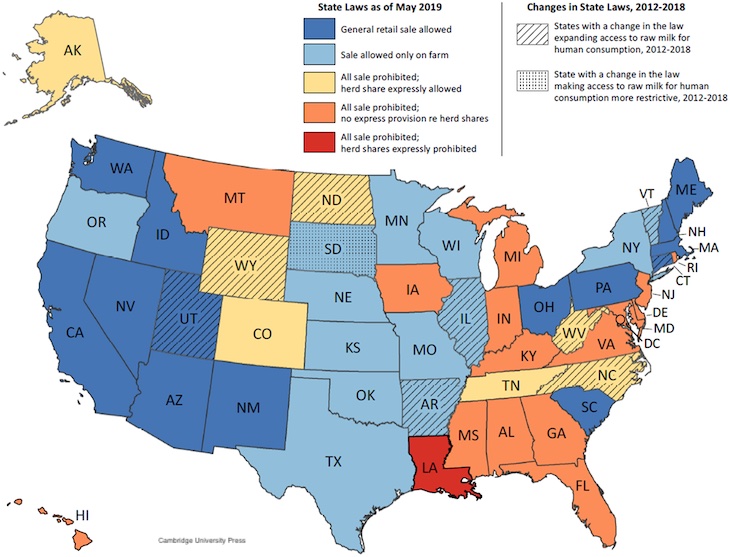A new study has confirmed that raw milk is linked to foodborne illness. During the time period of 2013 to 2018, 75 outbreaks that caused 675 illnesses were linked to unpasteurized milk. Of these illnesses, almost half were among children and teenagers aged o to 19 years. Given that the consumption of raw milk is low in this country, with only about 1 to 2% of the adult population buying it, these numbers are shocking. The study points out that almost 80% of those outbreaks occurred in states where the sale of raw milk is allowed.

Raw milk and raw milk products are a public health challenge in the United States. And laws that encourage availability of unpasteurized milk are associated with more illnesses and outbreaks.
Raw milk can be contaminated with many different pathogens, including Cryptosporidium, Shiga toxin-producing E. coli (STEC), Listeria monocytogenes, Campylobacter and Salmonella. All can cause severe illnesses and death, in addition to long term damage to health. STEC infections can cause HUS, a type of kidney failure. Campylobacter infections can cause Guillain-Barré syndrome, which may lead to paralysis. And Salmonella can cause heart problems and irritable bowel disease.
When pasteurization was introduced in the early twentieth century, the number of diseases and infant mortality associated with those products were dramatically reduced. While strict sanitation practices during the milking process can reduce pathogen transmission, it cannot eliminate it. It only takes 10 E. coli bacteria to make you very sick.
From 1993 to 2006, the estimated incidence of outbreaks linked to unpasteurized dairy products was 150 times greater per pound of product consumed that those involving pasteurized products. And raw dairy products were associated with about 840 times more illnesses and 45 times more hospitalizations than pasteurized products.
The interstate commerce of raw milk and raw milk products has been illegal since 1987. State laws, which vary widely, govern the sale of these items within state borders. People can buy raw milk direct from the farm, in some retail outlets, through herd shares, and at farmers markets in some states.
The study also found that there were significantly more outbreaks in states where the sale of raw milk is allowed at the retail level as opposed to only on-farm sales. And while outbreaks also occurred in states where raw milk sales are prohibited, people can access these products illegally, buy raw milk that is sold as pet food, or cross state borders to purchase it, as well as buying it online.
The study recommends that since raw milk is linked to foodborne illness, partnerships between states and the federal government are needed to coordinate outbreak investigations, to report outbreaks, and to monitor changes in laws that affect public health.




